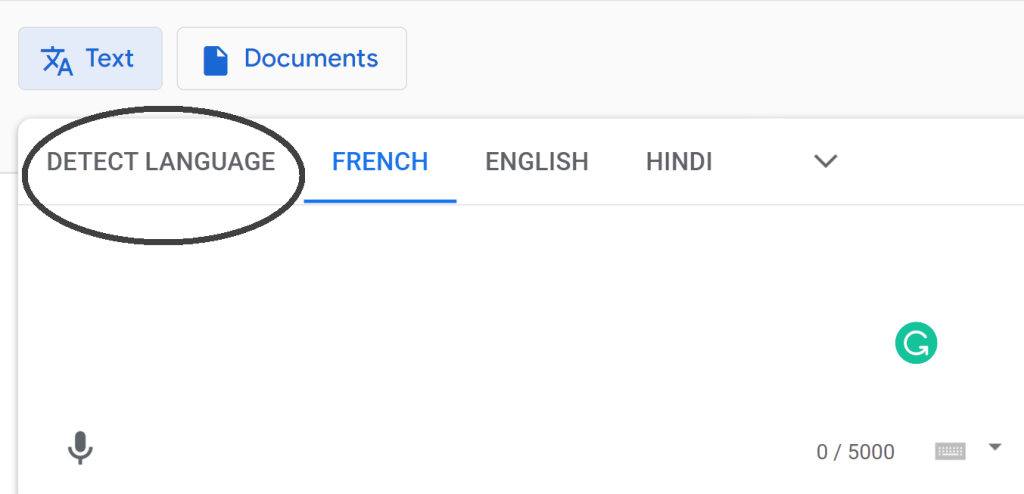Language detection is a natural language processing task where we need to identify the language of a text or document. Using machine learning for language identification was a difficult task a few years ago because there was not a lot of data on languages, but with the availability of data with ease, several powerful machine learning models are already available for language identification. So, if you want to learn how to train a machine learning model for language detection, then this article is for you. In this article, I will walk you through the task of language detection with machine learning using Python.
Language Detection
As a human, you can easily detect the languages you know. For example, I can easily identify Hindi and English, but being an Indian, it is also not possible for me to identify all Indian languages. This is where the language identification task can be used. Google Translate is one of the most popular language translators in the world which is used by so many people around the world. It also includes a machine learning model to detect languages that you can use if you don't know which language you want to translate.
The most important part of training a language detection model is data. The more data you have about every language, the more accurate your model will perform in real-time. The dataset that I am using is collected from Kaggle, which contains data about 22 popular languages and contains 1000 sentences in each of the languages, so it will be an appropriate dataset for training a language detection model with machine learning. So in the section below, I will take you through how you can train a language detection model with machine learning using Python.
Language Detection using Python
Let's start the task of language detection with machine learning by importing the necessary Python libraries and the dataset:
import pandas as pd import numpy as np from sklearn.feature_extraction.text import CountVectorizer from sklearn.model_selection import train_test_split from sklearn.naive_bayes import MultinomialNB data = pd.read_csv("https://raw.githubusercontent.com/amankharwal/Website-data/master/dataset.csv") print(data.head()) Text language 0 klement gottwaldi surnukeha palsameeriti ning ... Estonian 1 sebes joseph pereira thomas på eng the jesuit... Swedish 2 ถนนเจริญกรุง อักษรโรมัน thanon charoen krung เ... Thai 3 விசாகப்பட்டினம் தமிழ்ச்சங்கத்தை இந்துப் பத்திர... Tamil 4 de spons behoort tot het geslacht haliclona en... Dutch
Let's have a look at whether this dataset contains any null values or not:
Text 0 language 0 dtype: int64
Now let's have a look at all the languages present in this dataset:
data["language"].value_counts()
Persian 1000 Korean 1000 Indonesian 1000 Dutch 1000 Estonian 1000 Hindi 1000 Urdu 1000 French 1000 Turkish 1000 Latin 1000 Arabic 1000 Russian 1000 Thai 1000 Spanish 1000 English 1000 Japanese 1000 Pushto 1000 Chinese 1000 Tamil 1000 Swedish 1000 Romanian 1000 Portugese 1000 Name: language, dtype: int64
This dataset contains 22 languages with 1000 sentences from each language. This is a very balanced dataset with no missing values, so we can say this dataset is completely ready to be used to train a machine learning model.
Language Detection Model
Now let's split the data into training and test sets:
x = np.array(data["Text"]) y = np.array(data["language"]) cv = CountVectorizer() X = cv.fit_transform(x) X_train, X_test, y_train, y_test = train_test_split(X, y, test_size=0.33, random_state=42)
As this is a problem of multiclass classification, so I will be using the Multinomial Naïve Bayes algorithm to train the language detection model as this algorithm always performs very well on the problems based on multiclass classification:
model = MultinomialNB() model.fit(X_train,y_train) model.score(X_test,y_test)
0.953168044077135
Now let's use this model to detect the language of a text by taking a user input:
user = input("Enter a Text: ") data = cv.transform([user]).toarray() output = model.predict(data) print(output) Enter a Text: देखकर अच्छा लगता है ['Hindi']
So as you can see that the model performs well. One thing to note here is that this model can only detect the languages mentioned in the dataset.
Summary
Using machine learning for language identification was a difficult task a few years ago because there was not a lot of data on languages, but with the availability of data with ease, several powerful machine learning models are already available for language identification. I hope you liked this article on detecting languages with machine learning using Python. Feel free to ask your valuable questions in the comments section below.

No comments:
Post a Comment
Note: Only a member of this blog may post a comment.